The Lubrizol Corporation
Biodegradable Hydraulic Fluid Performance Technology
By Kellie Work, Product Manager, The Lubrizol Corporation | TLT CMF Plus November 2014
The biodegradable lubricant market continues to be in the spotlight in the industrial sector. There are a myriad of descriptions for these fluids that have generated some confusion in the marketplace: biodegradable lubricants, environmental fluids, environmentally friendly fluids, and biofriendly lubricants are just some of the descriptions of these products. An industry-recognized definition for biodegradability, according to the OECD 301B test method, is a fluid that can be readily or inherently biodegradable.
Readily biodegradable is when the lubricant degrades at least 60% over the course of 28 days of testing.
Inherently biodegradable is when the lubricant degrades at least 20% but less than 60% over the course of the 28 day test. These designations or classifications are important when choosing the right fluid for the application. This article will discuss a readily biodegradable fluid, specifically a biodegradable hydraulic fluid, and the performance technology Lubrizol has developed for it.
Due to the nature of hydraulic systems, fluid can be lost through leaks or spills. Leaks or spills can be problematic, especially in environmentally sensitive areas such as mining sites, construction sites, waterways, golf courses, etc. The amount of fluid lost through these leaks or spills varies depending on the type of equipment used. Two pieces of common equipment are excavators and mining shovels. Excavators have a typical sump size of between 5-10 gallons of fluid and mining shovels have a typical sump size of 150-200 gallons. Leaks for this type of equipment could result in a significant discharge of oil into the environment. It is not uncommon for a conventional fluid (not biodegradable) to be used in many of these applications. End users are sometimes skeptical of the performance of biodegradable fluids or they are concerned about the higher cost. Ultimately, the wider use of biodegradable lubricants will be driven by regulatory requirements at local, state and federal levels.
The increased concern for the environment and the potential impact from lubricants has led to an Increase in regulatory activity. Even with the increase in regulations, the largest portion of the hydraulic fluid demand is predominately mineral-based fluids. Lubrizol estimates that the overall glob al demand of biodegradable hydraulic fluids is approximately 5% of the hydraulic marketplace. In regions with regulations, the percentage is higher. Demand for biodegradable hydraulic fluid is expected to continue growing based on increasing environmental regulations.
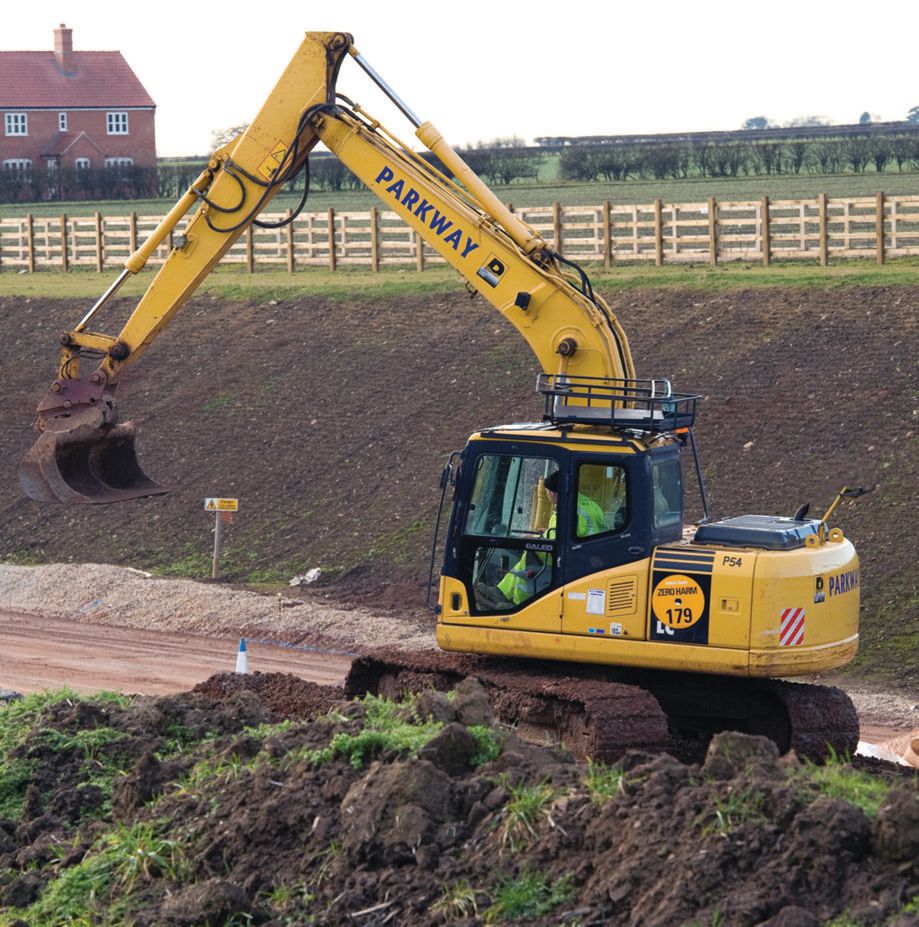
Current Regulations for Biodegradable Lubricants
The demand of these fluids in each region or country is largely based on regulations. There are many regulations, but the three that are generating the most interest are the United States Department of Agriculture (USDA) Biopreferred Program, the United States Environmental Protection Agency Vessel General Permit (U.S. EPA VGP), and European Union (EU) Ecolabel.
The USDA Biopreferred program is a voluntary labeling program intended to increase the purchase and use of biobased products. If fluids have >44% renewable carbon as measured by ASTM D6866, they are eligible for the program. Fluids that meet the requirements can carry the distinctive USDA-Certified Biobased Product label. Recently, the U.S. EPA has released a new regulation known as the U.S. EPA Vessel General Permit. This regulation, which went into effect in December of 2013, requires that all new powered vessels entering the waterways around the United States must use environmentally acceptable lubricants in their oil to sea interfaces unless technically infeasible. According to the regulation, an environmentally acceptable lubricant should be biodegradable, minimally-toxic and non-bioaccumulative.
The United States is not the only region in the world with these types of regulations. In fact, there are more stringent requirements outside of the United States. One notable regulation that is widely regarded is the EU Ecolabel. With the EU Ecolabel certification, the fluid is not only designed for the environmental requirements but has to meet the performance criteria as defined by ISO 15380. Ecolabel listings are formulation-specific. No changes to a formulation are allowed as they would require a new application and subsequent review.
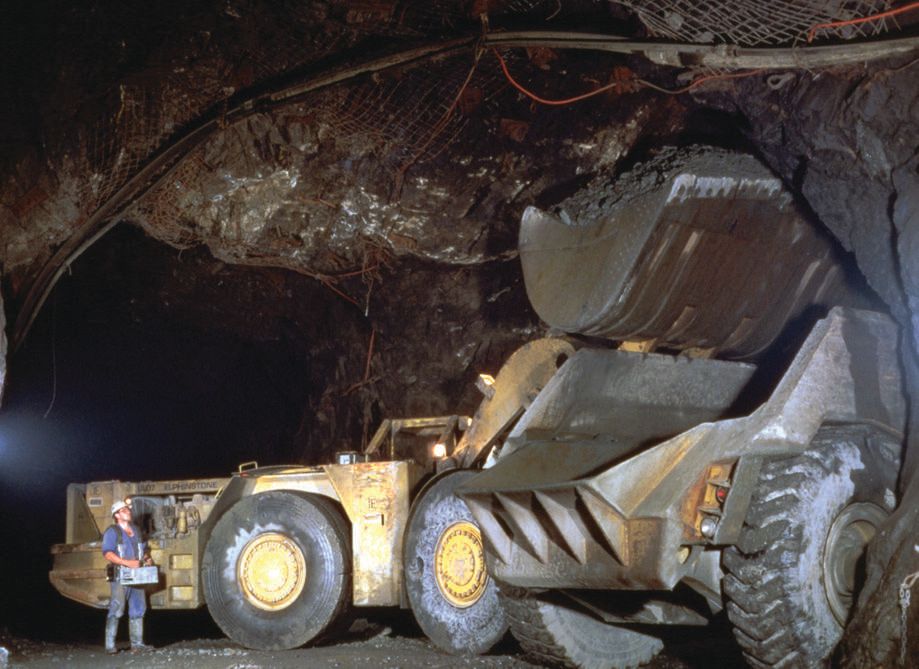
Lubrizol’s Latest Technology
What makes Lubrizol’s new hydraulic fluid technology different? This technology was designed to meet the EU Ecolabel as well as many other critical industry and OEM specifications. End users not only will have the peace of mind that their fluid will have minimal impact to the environment but will also deliver the performance required for their equipment.
Additive Package vs Finished Fluid
The new Lubrizol technology is available as either an additive or as a finished fluids. The additive Lubrizol® 5686EL treats at 1.25% in suitable saturated ester base oils. The finished fluids are Lubrizol® 5687 (ISO VG 32), Lubrizol® 5685 (ISO VG 46) and Lubrizol® 5689 (ISO VG 68). The option of a finished fluid is provided to Lubrizol’s customers to help optimize their supply chain, reduce complexity and/or test the marketplace for these fluids.
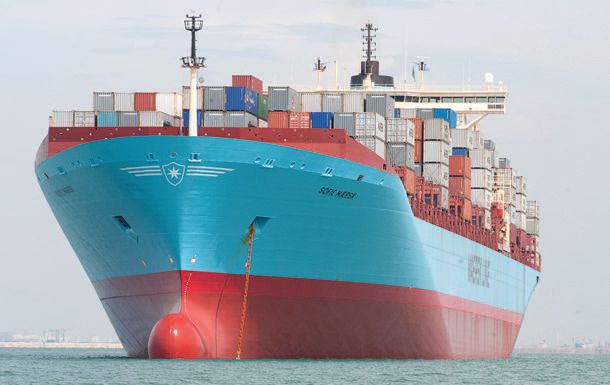
Performance Profile
Fluids utilized in hydraulic systems require critical performance in many areas to protect the internal components of the system. Lubrizol’s market research shows that protection of the internal components is a key concern among end users of hydraulic equipment because protection of the internal components will ultimately lead to longer equipment life.
Adequate antiwear protection is one way to protect components in a hydraulic system. Antiwear additive technology protects the system against wear and scuffing. There are many antiwear tests available, but the best way to measure the antiwear properties of a hydraulic fluid is by testing it in an industry-recognized pump test. To demonstrate the antiwear performance of this technology, both piston and vane pump testing were completed. The components at the end of these tests exhibited minimal wear. The weight loss results were excellent and well below the requirements of major OEM specifications. Lubrizol’s technology was tested in the Eaton 35VQ25 pump test. Eaton’s specification requires that a single hydraulic fluid is tested in three separate vane pump cartridges (50 hours each). The same fluid is used throughout the 150 hour test. Lubrizol’s technology had excellent antiwear performance, as seen in
Table 1.
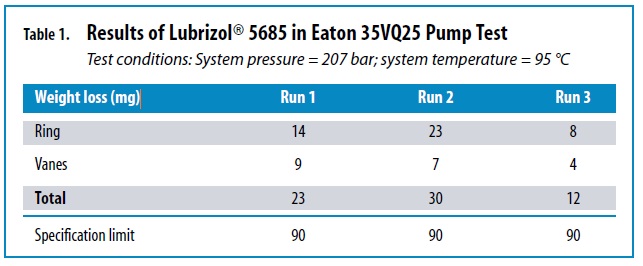 Air Release
Air Release
Another important performance property of a hydraulic fluid is its ability to release entrained air from the fluid during operation. Air release properties can be measured by an air release test (ASTM D3427). Entrained air can result in cavitation and ultimately equipment failure. Air release properties in hydraulic fluids can vary depending on viscosity, base fluid and additive system use in the formulation. In all viscosity grades tested, Lubrizol’s technology exhibits excellent air release values meeting all major hydraulic specifications.
Oxidation Resistance
Protection of the internal components of the system is highly dependent on the antiwear performance of the fluid but also dependent on other performance characteristics such as the oxidation resistance of the fluid. The byproducts of hydraulic fluid oxidation are long chain acids that can lead to sludge and varnish. Sludge and varnish can result in unexpected down time due to filter blockage and valve sticking. Ultimately, this results in reduced efficiency and shortened equipment life. A common method to measure oxidation is ASTM D943/ISO 4263-3. Like many of the hydraulic fluids in the marketplace, Lubrizol’s technology is ester-based, requiring the test to be run dry or without water present. Typical oxidation lifetime claims for ester-based fluids are around 3,000 hours. Lubrizol 5685’s oxidation lifetime exceeds the typical claims and produces a result of >10,000 hours.
In addition to the antiwear, air release and oxidation performance, ad ditional features and benefits of Lubrizol’s biodegradable hydraulic fluid technology can be found in
Table 2.
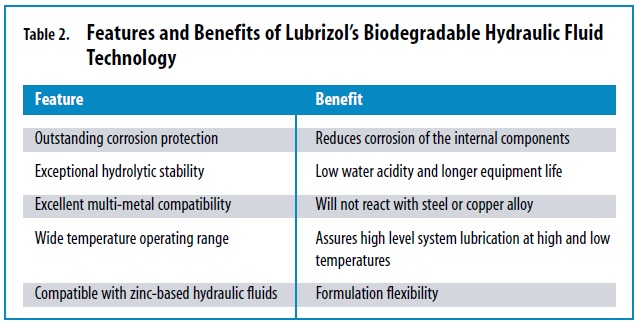 Specifications
Specifications
The technology for Lubrizol’s new biodegradable hydraulic fluid meets or has been approved against various OEM and industry specifications, as shown in
Table 3.
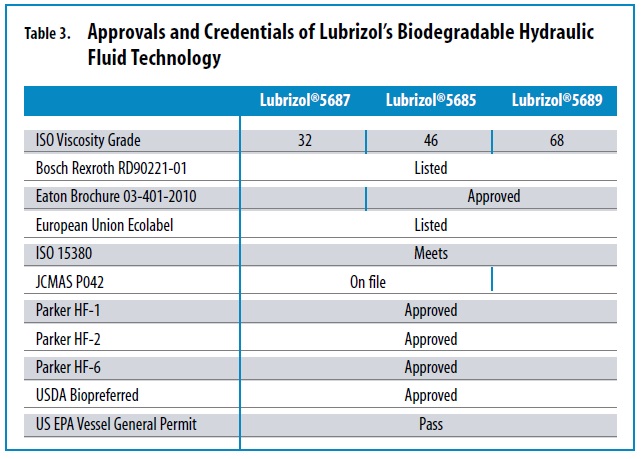
Lubrizol’s new biodegradable hydraulic fluid technology is now available and meets many industry specifications. Lubrizol’s global supply network can provide this technology around the world. For customers who would like to enter the marketplace quickly, Lubrizol can rebrand the finished fluids (Lubrizol® 5687 ISO VG 32, Lubrizol® 5685 ISO VG 46, Lubrizol® 5689 ISO VG 68). Lubrizol can also help facilitate rebrand approvals from the various OEMs and industry bodies.